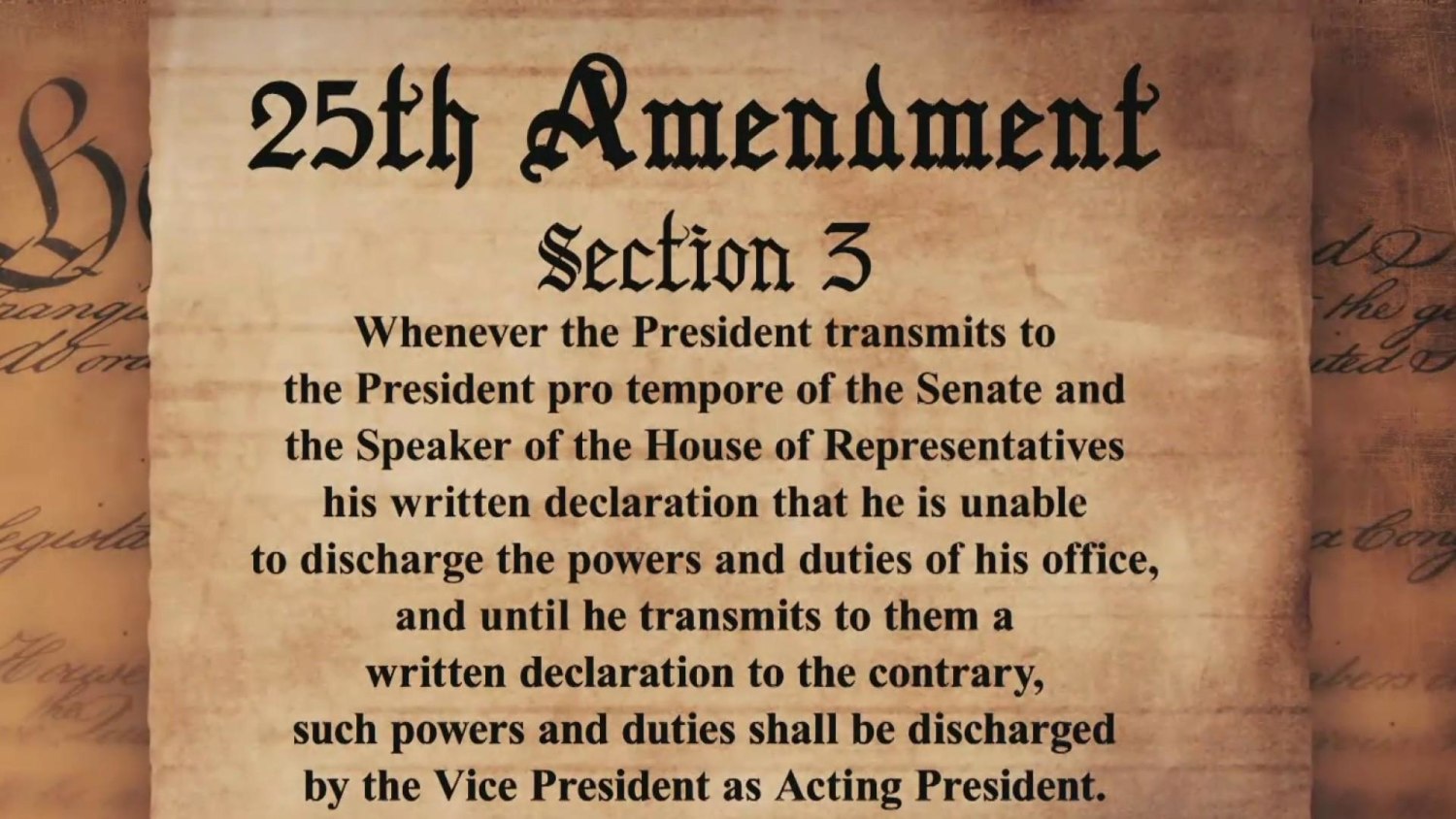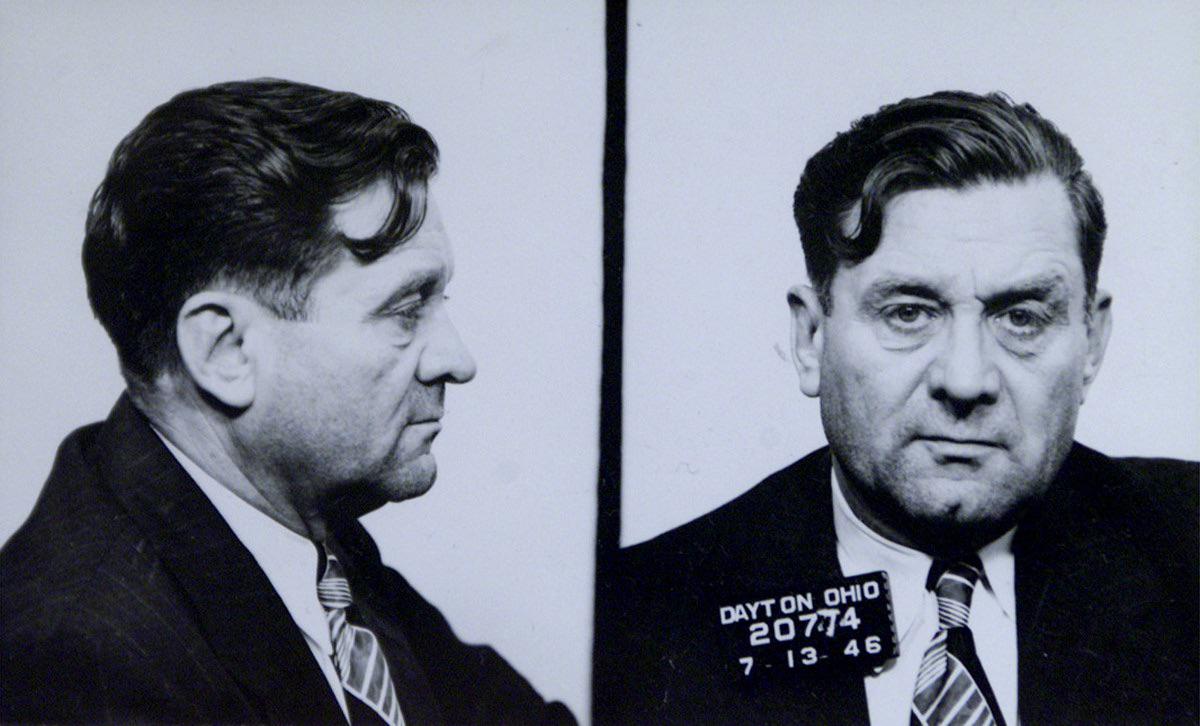
What happens if the President can't do their job? The 25th Amendment to the U.S. Constitution answers this crucial question. Ratified on February 10, 1967, it provides a clear process for dealing with presidential incapacity. This amendment ensures that the country remains effectively governed even if the President is unable to perform their duties. It includes four sections that address presidential succession, temporary transfer of power, and the removal of a President if necessary. While Sections 1, 2, and 3 have been invoked, Section 4, which deals with the removal of a President against their will, remains untested. Understanding the 25th Amendment is essential for grasping how the U.S. maintains stable leadership during crises.
Key Takeaways:
- The 25th Amendment ensures the country can function effectively if the President is unable to serve, with clear rules for succession and temporary transfer of power.
- Section 4 of the 25th Amendment, though complex, has never been used, but it remains important for addressing presidential incapacitation and ensuring continuity of government.
Understanding the 25th Amendment
The 25th Amendment to the United States Constitution is a vital piece of legislation that ensures the continuity of presidential leadership. Ratified in 1967, it provides a clear process for addressing presidential incapacitation. Here are 50 key facts about this important amendment.
-
Ratification: Ratified on February 10, 1967, after being proposed by President Lyndon B. Johnson in 1965.
-
Purpose: Ensures the country remains governed effectively during presidential incapacitation.
-
Provisions: Includes four sections addressing succession, temporary transfer of power, and removal of the President.
Presidential Succession and Vacancy
The 25th Amendment clarifies the line of succession and the process for filling a vacancy in the Vice Presidency.
-
Section 1: States that if the President dies, resigns, or is removed, the Vice President assumes the office.
-
Section 2: Outlines the process for filling a Vice Presidential vacancy. The President nominates a replacement, confirmed by Congress.
Temporary Transfer of Power
Sections 3 and 4 of the amendment address the temporary transfer of presidential power.
-
Section 3: Allows the President to temporarily transfer power to the Vice President if unable to serve due to illness or other incapacitation.
-
Section 4: Provides for the removal of the President if they are unable to discharge their duties, requiring a written declaration from the Vice President and a majority of principal officers.
Historical Context and Usage
The 25th Amendment has been invoked several times, primarily under Section 3.
-
Invocation: Invoked six times, but only under Section 3. President Reagan used it in 1985, and President George W. Bush in 2002 for medical procedures.
-
Section 4 Usage: Despite its significance, Section 4 has never been invoked due to its stringent requirements.
Ensuring Continuity of Government
The amendment ensures there is always a capable person to assume the presidency if needed.
-
Presidential Succession: Clarifies the line of succession, including the Vice President, Speaker of the House, President pro tempore of the Senate, and Cabinet members.
-
Presidential Inability: Addresses the issue of presidential inability by providing a clear process for transferring power.
Historical Examples and Proposals
The amendment was proposed in response to historical instances of presidential incapacitation.
-
Historical Context: Proposed due to instances like Presidents James Garfield and Woodrow Wilson's prolonged incapacitation.
-
Johnson’s Proposal: President Lyndon B. Johnson proposed the amendment in January 1965.
Ratification Process and State Participation
The amendment required ratification by three-fourths of the states.
-
Ratification Process: Achieved on February 10, 1967, but officially adopted on February 23, 1967.
-
States That Did Not Ratify: North Dakota, Georgia, and South Carolina did not ratify the 25th Amendment.
Complexity and Public Understanding
Section 4 is the most complex part of the amendment, often misunderstood by the public.
-
Section 4’s Complexity: Requires a two-thirds vote from both the House and Senate to remove the President.
-
Public Understanding: Often shaky due to its complexity and lack of real-world applications.
Modern Relevance and Discussions
The 25th Amendment gained significant attention during the presidency of Donald Trump.
-
Trump Era Discussions: Some called for its invocation due to concerns about his fitness for office.
-
Section 4’s Limitations: Designed to ensure a conscious, communicative person is in charge, not to stop unfit presidents.
Real-World Applications
The amendment has been used in historical contexts, such as President Nixon’s resignation.
-
Historical Examples: Used during President Richard Nixon’s resignation, with Vice President Gerald Ford taking over.
-
Reagan’s Use: President Ronald Reagan used Section 3 in 1985 during surgery.
-
Bush’s Use: President George W. Bush used Section 3 in 2002 for a medical procedure.
Section 3’s Simplicity and Section 4’s Potential
Section 3 is straightforward, while Section 4 has dramatic potential but remains uninvoked.
-
Section 3’s Simplicity: Used three times by presidents undergoing medical procedures.
-
Section 4’s Dramatic Potential: Often portrayed in fiction but less dramatic in real life.
-
Section 4’s Uninvoked Status: Despite its potential, Section 4 remains uninvoked.
Detecting Presidential Infirmity
Advancements in technology have made it easier to detect presidential infirmity.
-
Presidential Infirmity Detection: Television and other media make it easier to identify when a president is unable to serve.
-
Johnson’s Praise: Upon ratification, President Johnson praised the amendment for perfecting the Constitution.
Legislative and Executive Involvement
The amendment involves both legislative and executive branches in the process of addressing presidential incapacitation.
-
Section 4’s Two-Thirds Vote Requirement: Requires a two-thirds vote from both the House and Senate.
-
Section 4’s Purposeful Difficulty: Intentionally difficult to prevent misuse for political gain.
-
Section 4’s Limited Circumstances: Useful only under very limited circumstances, such as when the president is comatose or missing.
Public Misunderstanding and Media Portrayal
The public often misunderstands Section 4 due to its complexity and media portrayals.
-
Section 4’s Public Misunderstanding: Leads to misconceptions about its usage.
-
Section 4’s Hollywood Portrayal: Often inaccurate, contributing to public misconceptions.
Real-World Implications and Constitutional Significance
Section 4 has significant real-world implications for ensuring the continuity of government.
-
Section 4’s Real-World Implications: Ensures continuity of government and addresses presidential incapacitation.
-
Section 4’s Constitutional Significance: Provides a safeguard against presidential incapacitation.
Political and Legal Implications
Invoking Section 4 would have significant political and legal implications.
-
Section 4’s Political Implications: Could lead to a change in leadership and affect the balance of power.
-
Section 4’s Legal Implications: Complex and would require careful consideration of constitutional law.
Historical Context and Modern Relevance
The historical context of the amendment’s creation provides insight into its modern relevance.
-
Section 4’s Historical Context: Reflects the concerns and challenges faced by lawmakers at the time.
-
Section 4’s Modern Relevance: Remains relevant today, particularly in times of presidential uncertainty.
Potential Usage and Constitutional Framework
The potential usage of Section 4 is a topic of ongoing debate.
-
Section 4’s Potential Usage: Could be used in future scenarios where a president is deemed unfit to serve.
-
Section 4’s Constitutional Framework: Ensures a clear process for addressing presidential incapacitation.
Legislative and Executive Roles
The involvement of Congress and the executive branch is significant in the process of invoking Section 4.
-
Section 4’s Legislative Involvement: Ensures the removal of a president is a legislative decision.
-
Section 4’s Executive Involvement: The Vice President plays a crucial role in declaring the President incapacitated.
Judicial Review and Public Perception
The potential for judicial review and public perception of Section 4 are important considerations.
-
Section 4’s Judicial Review: Highlights the complex interplay between the legislative, executive, and judicial branches.
-
Section 4’s Public Perception: Influenced by media portrayals and political rhetoric.
Practical and Ethical Implications
The practical and ethical implications of invoking Section 4 raise important questions.
-
Section 4’s Practical Application: Requires careful consideration of specific circumstances.
-
Section 4’s Ethical Implications: Raises questions about balancing national security and respecting the democratic process.
International and Domestic Implications
Invoking Section 4 could have significant international and domestic implications.
-
Section 4’s International Implications: Could affect diplomatic relations and global stability.
-
Section 4’s Domestic Implications: Would impact the political landscape and government leadership.
Constitutional Evolution and Future Relevance
The evolution of constitutional law surrounding Section 4 reflects ongoing efforts to refine the framework for addressing presidential incapacitation.
-
Section 4’s Constitutional Evolution: Reflects efforts to improve the framework for addressing presidential incapacitation.
-
Section 4’s Future Relevance: Remains relevant for future scenarios where the continuity of government and the fitness of the President are called into question.
The 25th Amendment's Role in Presidential Continuity
The 25th Amendment ensures the U.S. government remains stable during presidential incapacitation. Ratified on February 10, 1967, it provides a clear process for presidential succession and temporary power transfers. Sections 1 and 2 address succession and filling a Vice Presidential vacancy. Sections 3 and 4 handle temporary and involuntary power transfers, respectively. Section 4, though never invoked, remains a topic of debate due to its complexity and potential impact. Historical instances like Reagan's and Bush's temporary power transfers highlight its practical use. Despite public misconceptions and dramatic portrayals, the amendment's real-world application is crucial for maintaining governmental continuity. Understanding the 25th Amendment's provisions and implications helps grasp its importance in safeguarding the nation's leadership during times of uncertainty.
Frequently Asked Questions
Was this page helpful?
Our commitment to delivering trustworthy and engaging content is at the heart of what we do. Each fact on our site is contributed by real users like you, bringing a wealth of diverse insights and information. To ensure the highest standards of accuracy and reliability, our dedicated editors meticulously review each submission. This process guarantees that the facts we share are not only fascinating but also credible. Trust in our commitment to quality and authenticity as you explore and learn with us.


